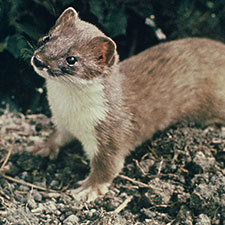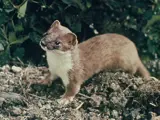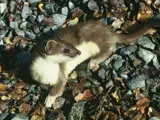 Stoats
Stoats
Common name: Stoat
Botanical name: Mustela erminea
Management programme: Advisory
Where are they originally from?
Stoats were introduced from Europe in the 1880s to control rabbits.
Why are they a pest?
- Stoats are a significant predator that prey on a variety of native species birds, lizards, frogs, eggs, eels and insects.
- They are voracious and relentless hunters.
- Can have a significant impact of bird populations.
Where are they found?
- Any habitat where they can find prey - from beaches to remote high country; at any altitude up to and beyond the tree line; in any kind of forest, exotic or native.
- Known to live near human settlements.
What do they look like?
- A long slender animal with legs relatively short compared to the body.
- They have reddish-brown fur on its back, a white or cream coloured underbelly, and a long tail (relative to weasels) with an obvious black tip.
- Straight line between brown back fur and white underbelly fur.
- Longer and heavier than weasels.
What are the rules?
Advisory
Council does not enforce the control of advisory species. It is landowner/occupier responsibility to manage these pests. Council may provide advice on how to manage or control advisory species if required.
How do you get rid them?
- Trapping
- Poisoning
CAUTION: When using pesticide please READ THE LABEL thoroughly to ensure that all instructions and safety requirements are followed. When using traps please ensure that all instructions, safety requirements and laws (in particular the Animal Welfare Act 1999) are followed.
NAWAC (National Animal Welfare Advisory Committee) approved kill traps need to be set as per the manufacturers guidelines.
Guidelines on trap use https://www.mpi.govt.nz/animals/animal-welfare/animal-welfare-and-pest-management/traps-and-devices/
DISCLAIMER: Information in this fact sheet regarding pesticides does not necessarily appear on the labels of the products concerned. Bay of Plenty Regional Council does not accept liability for any damage that may arise from the use of pesticides at non-standard rates. Mention of product trade names implies neither endorsement of those products nor criticism of similar products not mentioned. Bay of Plenty Regional Council does not accept liability for any damage or injury that may arise from the use of traps, toxins and firearms.
Read more on pest control guidelines and regulations
Images


